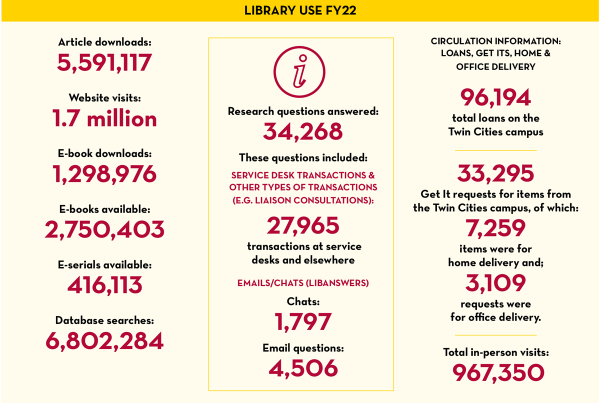This post is one in a series about the Libraries open access (OA) principles, as outlined in Towards Open Access at the University of Minnesota (z.umn.edu/TowardsOA). The Senate Library Committee (SLC) issued a statement of support in November 2021 and a number of Senate Committees have endorsed the SLC’s statement.
The Libraries’ statement of open access (OA) principles describes our aims for true transformation of the scholarly publishing system. We support next generation publishing models and academy-owned publishing infrastructure so that scholars and academic organizations are in control of production.
One way the Libraries support innovation is through the support of open access repositories, including arXiv, EdArXiv, engrXiv, and PsyArXiv. These repositories (and many others!) enable the sharing of “preprints”, a term used in a variety of ways, but generally taken to be a research article that has not yet been peer reviewed and published in a journal.
There are many benefits to researchers in sharing their work as a preprint, including that preprints are open access, they enable rapid release of findings, and are increasingly being recognized as “citable” interim research products. For example, in 2017, the National Institutes of Health began encouraging the use of preprints “to speed the dissemination and enhance the rigor of their work.”
While preprints and preprint servers have been around for many decades, they have been growing in popularity over the last several years, with the introduction of new disciplinary-specific repositories and new models of peer review. Here are a few examples of next generation open access publishing systems:
Overlay journals
An overlay journal “overlays” peer review onto articles that are submitted to a preprint repository. Examples include The Open Journal of Astrophysics and Discrete Analysis. These journals are generally “diamond OA”, where neither the reader nor the author has to pay, and they can be extremely low cost (Discrete Analysis estimated a cost of around $10 per article).
Publish, then review
eLife is a fully open access journal that started requiring all articles be posted as a preprint prior to submission in 2021. The journal has continued to innovate, introducing a new model in which no articles will be rejected. Instead peer reviewer comments will be posted alongside all articles it accepts for review. Authors have the option to revise and resubmit, with new versions and new peer reviews also published online, until they decide they would like it to be the version of record. The article is formally “published” at this point and is submitted to PubMed Central. eLife charges $2000 per article.
Portable peer review
Peer Community In (PCI) and Review Commons are free platforms that also follow a publish, then review process. For both, the authors submit their article to a preprint repository and request review. They receive a written review that they can post, packaged with revisions and a response to the reviewers on the site, or as a refereed preprint in a preprint repository. The platforms also provide authors an option to submit the package to a “friendly” journal that will make use of the completed peer review and decide to accept, send for additional peer review, or reject within a tight timeframe. PCI also publishes the Peer Community Journal.
PCI also offers a Registered Report (PCI-RR) option. A Registered Report is essentially a proposal of the methods the researchers intend to use and is peer reviewed before the research is conducted. The benefits of registered reports include improving the quality of the research and reducing publication bias (e.g., the tendency for authors and journals to publish only positive results, despite the value of sharing negative or inclusive results). PCI maintains a list of participating and interested journals. For example, Imaging Neuroscience asks that authors use PCI-RR.
Achieving a true transformation
These are just a few examples of innovation in scholarly publishing. They demonstrate a path forward that moves beyond traditional journals, away from legacy commercial publishers, and towards a world in which researchers are in control of their system of communication.
You can find a list of the Libraries’ investments in OA here. We welcome suggestions for new OA projects—contact us at openaccess@umn.edu with ideas or questions.




